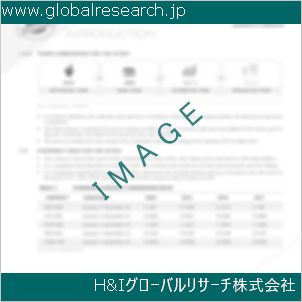Table of Contents
1 Industry Overview of Carbondioxide
1.1 Definition and Specifications of Carbondioxide
1.1.1 Definition of Carbondioxide
1.1.2 Specifications of Carbondioxide
1.2 Classification of Carbondioxide
1.3 Applications of Carbondioxide
1.3.1 Nuclear Application
1.3.2 Non-Nuclear Application
1.4 Industry Chain Structure of Carbondioxide
1.5 Industry Overview and Major Regions Status of Carbondioxide
1.5.1 Industry Overview of Carbondioxide
1.5.2 Global Major Regions Status of Carbondioxide
1.6 Industry Policy Analysis of Carbondioxide
1.7 Industry News Analysis of Carbondioxide
2 Manufacturing Cost Structure Analysis of Carbondioxide
2.1 Raw Material Suppliers and Price Analysis of Carbondioxide
2.2 Equipment Suppliers and Price Analysis of Carbondioxide
2.3 Labor Cost Analysis of Carbondioxide
2.4 Other Costs Analysis of Carbondioxide
2.5 Manufacturing Cost Structure Analysis of Carbondioxide
2.6 Manufacturing Process Analysis of Carbondioxide
3 Technical Data and Manufacturing Plants Analysis of Carbondioxide
3.1 Capacity and Commercial Production Date of Global Carbondioxide Major Manufacturers in 2023
3.2 Manufacturing Plants Distribution of Global Carbondioxide Major Manufacturers in 2023
3.3 R&D Status and Technology Source of Global Carbondioxide Major Manufacturers in 2023
3.4 Raw Materials Sources Analysis of Global Carbondioxide Major Manufacturers in 2023
4 Capacity, Production and Revenue Analysis of Carbondioxide by Regions, Types and Manufacturers
4.1 Global Capacity, Production and Revenue of Carbondioxide by Regions 2019-2024
4.2 Global and Major Regions Capacity, Production, Revenue and Growth Rate of Carbondioxide 2019-2024
4.3 Global Capacity, Production and Revenue of Carbondioxide by Types 2019-2024
4.4 Global Capacity, Production and Revenue of Carbondioxide by Manufacturers 2019-2024
5 Price, Cost, Gross and Gross Margin Analysis of Carbondioxide by Regions, Types and Manufacturers
5.1 Price, Cost, Gross and Gross Margin Analysis of Carbondioxide by Regions 2019-2024
5.2 Price, Cost, Gross and Gross Margin Analysis of Carbondioxide by Types 2019-2024
5.3 Price, Cost, Gross and Gross Margin Analysis of Carbondioxide by Manufacturers 2019-2024
6 Consumption Volume, Consumption Value and Sale Price Analysis of Carbondioxide by Regions, Types and Applications
6.1 Global Consumption Volume and Consumption Value of Carbondioxide by Regions 2019-2024
6.2 Global and Major Regions Consumption Volume, Consumption Value and Growth Rate of Carbondioxide 2019-2024
6.3 Global Consumption Volume and Consumption Value of Carbondioxide by Types 2019-2024
6.4 Global Consumption Volume and Consumption Value of Carbondioxide by Applications 2019-2024
6.5 Sale Price of Carbondioxide by Regions 2019-2024
6.6 Sale Price of Carbondioxide by Types 2019-2024
6.7 Sale Price of Carbondioxide by Applications 2019-2024
6.8 Market Share Analysis of Carbondioxide by Different Sale Price Levels
7 Supply, Import, Export and Consumption Analysis of Carbondioxide
7.1 Supply, Consumption and Gap of Carbondioxide 2019-2024
7.2 Global Capacity, Production, Price, Cost, Revenue, Supply, Import, Export and Consumption of Carbondioxide 2019-2024
7.3 USA Capacity, Production, Price, Cost, Revenue, Supply, Import, Export and Consumption of Carbondioxide 2019-2024
7.4 EU Capacity, Production, Price, Cost, Revenue, Supply, Import, Export and Consumption of Carbondioxide 2019-2024
7.5 China Capacity, Production, Price, Cost, Revenue, Supply, Import, Export and Consumption of Carbondioxide 2019-2024
7.6 Japan Capacity, Production, Price, Cost, Revenue, Supply, Import, Export and Consumption of Carbondioxide 2019-2024
8 Major Manufacturers Analysis of Carbondioxide
8.1 Manufacturer One
8.1.1 Company Profile
8.1.2 Product Picture and Specifications
8.1.2.1 Type I
8.1.2.2 Type II
8.1.2.3 Type III
8.1.3 Capacity, Production, Price, Cost, Gross and Revenue
8.1.4 Contact Information
8.2 Manufacturer Two
8.2.1 Company Profile
8.2.2 Product Picture and Specifications
8.2.2.1 Type I
8.2.2.2 Type II
8.2.2.3 Type III
8.2.3 Capacity, Production, Price, Cost, Gross and Revenue
8.2.4 Contact Information
8.3 Manufacturer Three
8.3.1 Company Profile
8.3.2 Product Picture and Specifications
8.3.2.1 Type I
8.3.2.2 Type II
8.3.2.3 Type III
8.3.3 Capacity, Production, Price, Cost, Gross and Revenue
8.3.4 Contact Information
8.4 Manufacturer Four
8.4.1 Company Profile
8.4.2 Product Picture and Specifications
8.4.2.1 Type I
8.4.2.2 Type II
8.4.2.3 Type III
8.4.3 Capacity, Production, Price, Cost, Gross and Revenue
8.4.4 Contact Information
8.5 Manufacturer Five
8.5.1 Company Profile
8.5.2 Product Picture and Specifications
8.5.2.1 Type I
8.5.2.2 Type II
8.5.2.3 Type III
8.5.3 Capacity, Production, Price, Cost, Gross and Revenue
8.5.4 Contact Information
…
9 Marketing Trader or Distributor Analysis of Carbondioxide
9.1 Marketing Channels Status of Carbondioxide
9.2 Traders or Distributors with Contact Information of Carbondioxide by Regions
9.3 Ex-work Price, Channel Price and End Buyer Price Analysis of Carbondioxide
9.4 Regional Import, Export and Trade Analysis of Carbondioxide
10 Industry Chain Analysis of Carbondioxide
10.1 Upstream Major Raw Materials Suppliers Analysis of Carbondioxide
10.1.1 Major Raw Materials Suppliers with Contact Information Analysis of Carbondioxide
10.1.2 Major Raw Materials Suppliers with Supply Volume Analysis of Carbondioxide by Regions
10.2 Upstream Major Equipment Suppliers Analysis of Carbondioxide
10.2.1 Major Equipment Suppliers with Contact Information Analysis of Carbondioxide
10.2.2 Major Equipment Suppliers with Product Pictures Analysis of Carbondioxide by Regions
10.3 Downstream Major Consumers Analysis of Carbondioxide
10.3.1 Major Consumers with Contact Information Analysis of Carbondioxide
10.3.2 Major Consumers with Consumption Volume Analysis of Carbondioxide by Regions
10.4 Supply Chain Relationship Analysis of Carbondioxide
11 Development Trend of Analysis of Carbondioxide
11.1 Capacity, Production and Revenue Forecast of Carbondioxide by Regions and Types
11.1.1 Global Capacity, Production and Revenue of Carbondioxide by Regions 2024-2029
11.1.2 Global and Major Regions Capacity, Production, Revenue and Growth Rate of Carbondioxide 2024-2029
11.1.3 Global Capacity, Production and Revenue of Carbondioxide by Types 2024-2029
11.2 Consumption Volume and Consumption Value Forecast of Carbondioxide by Regions, Types and Applications
11.2.1 Global Consumption Volume and Consumption Value of Carbondioxide by Regions 2024-2029
11.2.2 Global and Major Regions Consumption Volume, Consumption Value and Growth Rate of Carbondioxide 2024-2029
11.2.3 Global Consumption Volume and Consumption Value of Carbondioxide by Types 2024-2029
11.2.4 Global Consumption Volume and Consumption Value of Carbondioxide by Applications 2024-2029
11.3 Supply, Import, Export and Consumption Forecast of Carbondioxide
11.3.1 Supply, Consumption and Gap of Carbondioxide 2024-2029
11.3.2 Global Capacity, Production, Price, Cost, Revenue, Supply, Import, Export and Consumption of Carbondioxide 2024-2029
11.3.3 USA Capacity, Production, Price, Cost, Revenue, Supply, Import, Export and Consumption of Carbondioxide 2024-2029
11.3.4 EU Capacity, Production, Price, Cost, Revenue, Supply, Import, Export and Consumption of Carbondioxide 2024-2029
11.3.5 China Capacity, Production, Price, Cost, Revenue, Supply, Import, Export and Consumption of Carbondioxide 2024-2029
11.3.6 Japan Capacity, Production, Price, Cost, Revenue, Supply, Import, Export and Consumption of Carbondioxide 2024-2029
12 New Project Investment Feasibility Analysis of Carbondioxide
12.1 New Project SWOT Analysis of Carbondioxide
12.2 New Project Investment Feasibility Analysis of Carbondioxide
13 Conclusion of the Global Carbondioxide (CAS 124-38-9) Industry 2024 Market Research Report
| ※参考情報 二酸化炭素(CO2)は、化学式で表される無色・無臭の気体で、自然界に広く存在している物質の一つです。CAS番号は124-38-9で、通常は地球の大気の一部として、また生物の呼吸や植物の光合成において重要な役割を果たしています。 二酸化炭素の特性は興味深いものがあります。常温常圧では気体ですが、圧力を加えると液体に、さらに冷却すると固体(ドライアイス)になります。物理的特性としては、密度が空気よりも大きく、下に溜まりやすいという特徴があります。また、二酸化炭素は水に溶けやすく、炭酸を生成することで知られています。これは飲料膜の中で広く利用されており、飲み物に爽快感を与える要因となっています。 二酸化炭素は主に自然由来のものと人工由来のものに分類されます。自然由来の二酸化炭素は、火山活動や森林の呼吸、土壌微生物の活動などから発生します。一方、人工由来の二酸化炭素は、化石燃料の燃焼や工業プロセス、廃棄物の焼却などの人間活動から生まれます。これにより、特に産業革命以降、地球温暖化や気候変動に大きく寄与しているとされています。 二酸化炭素は多様な用途を持ち、その利用はさまざまな分野に及びます。例えば、食品産業では、炭酸飲料の発泡剤として広く用いられています。これは、二酸化炭素が水に溶解することで炭酸を生成し、微細な気泡が飲料に爽快感を与えるためです。また、二酸化炭素は冷媒や消火剤としても利用されます。ドライアイスは、輸送や保管の際の冷却手段として重宝されています。 医療分野においても、二酸化炭素は刺激剤や麻酔に併用されることがあります。特に内視鏡手術などでは、二酸化炭素を体内に注入することで、視野を広げたり、手術を行いやすくするために利用されます。また、炭酸泉療法などのリラクゼーションや健康促進の手法でも見られます。 近年、二酸化炭素の回収・利用(CCU)や貯蔵(CCS)の技術も注目されています。これらは、二酸化炭素を大気から排出しないように管理し、持続可能な方法で使用することを目的としています。CCUS技術は、特に化石燃料を使用する業界において、温室効果ガスの排出を削減するための重要な手段とされています。捕集された二酸化炭素は、さまざまな製品の原料として利用できる他、地中に安全に貯蔵することで、温暖化の進行を抑制することが期待されています。 二酸化炭素の環境への影響についても考慮が必要です。大気中の二酸化炭素濃度の上昇は、地球温暖化を引き起こし、異常気象や生態系の変化を引き起こす原因となっています。特に、産業活動や交通機関からの排出が増加している現代社会において、これを緩和するための取り組みが求められています。 持続可能な社会を実現するためには、再生可能エネルギーの利用促進やエネルギー効率の向上、二酸化炭素排出の削減が急務です。また、二酸化炭素を有効に活用する技術の研究・開発も、今後ますます重要になるでしょう。バイオマスからのエネルギー生成や、工業プロセスにおける二酸化炭素のリサイクル技術など、多様な方法が模索されています。 このように、二酸化炭素は自然界において欠かせない存在である一方、人間活動によりその濃度が変化し、環境に影響を与えていることが理解できます。今後は、その特性を理解し、持続可能な方法で利用していくことが、私たちの責任となるでしょう。】 |
❖ 免責事項 ❖
http://www.globalresearch.jp/disclaimer












